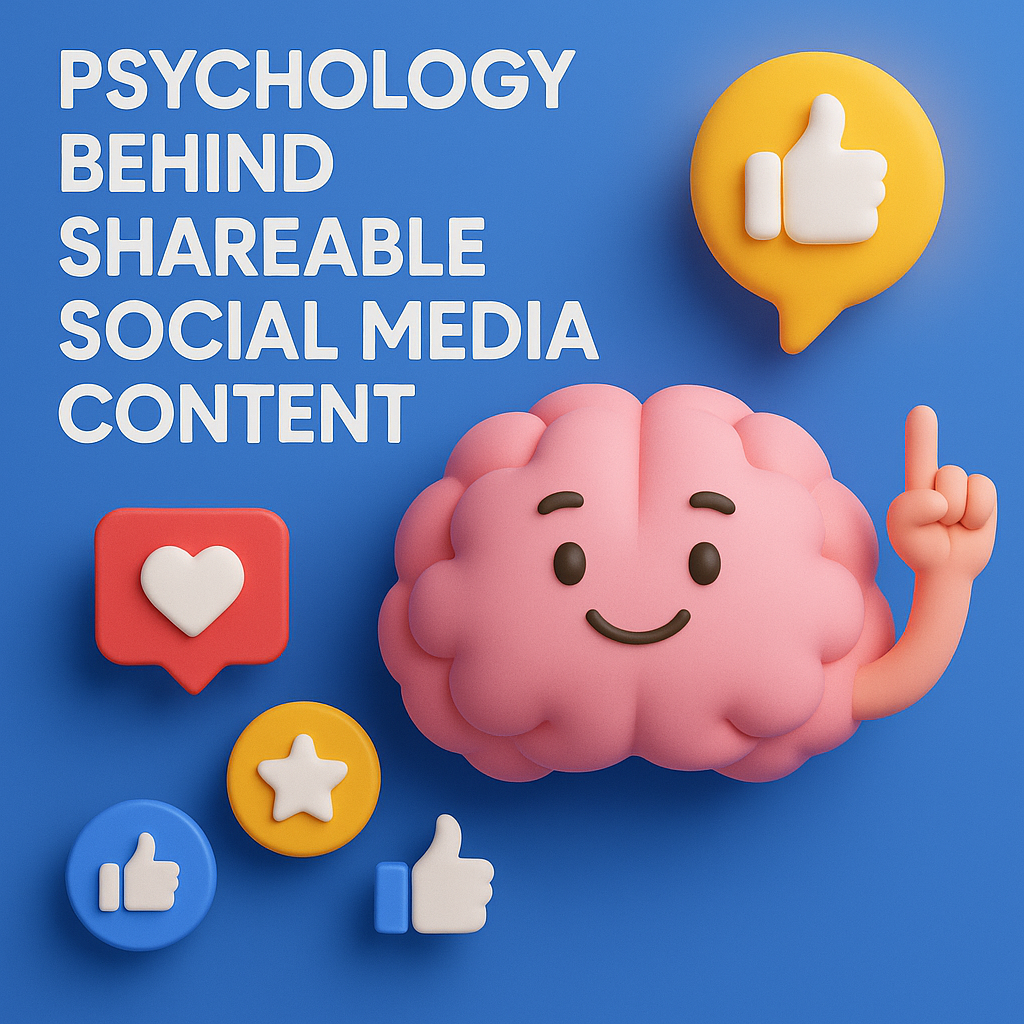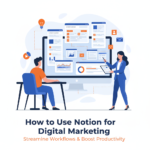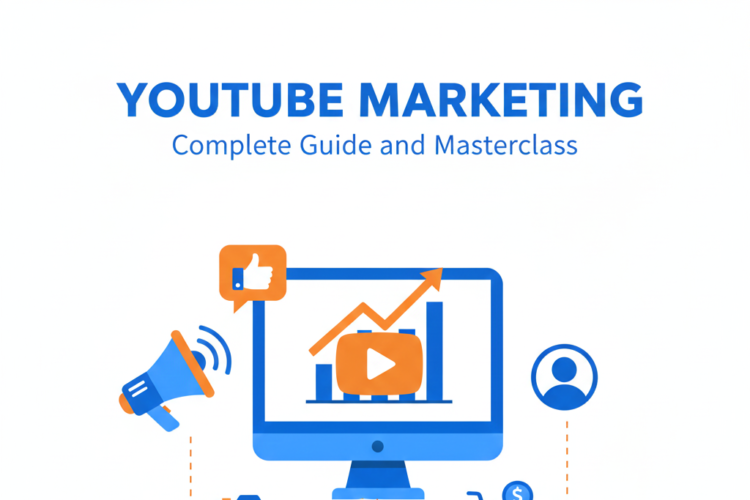
Psychology Behind Shareable Social Media Content
Table of Contents
-
Introduction: Why Content Goes Viral
-
The Psychological Triggers Behind Sharing
-
Emotional Drivers That Fuel Shares
-
Cognitive Biases at Play
-
The Role of Identity and Social Currency
-
How Format Affects Shareability
-
Psychological Content Frameworks to Use
-
Brand Examples That Got It Right
-
Best Practices for Creating Shareable Content
-
Final Thoughts
1. Introduction: Why Content Goes Viral
People don’t just share content—they share what it says about them.
To consistently create content that spreads, marketers must understand why people share in the first place. And the answer lies in psychology: emotions, identity, social proof, and cognitive behavior.
Understanding these motivations can transform your content from passive posts to viral powerhouses.
2. The Psychological Triggers Behind Sharing
According to a study by The New York Times Customer Insight Group, people share content to:
-
Bring value and entertainment to others
-
Define themselves to others
-
Grow and nourish relationships
-
Achieve self-fulfillment
-
Promote causes or brands they care about
In short: People share to connect, express, and impact.
3. Emotional Drivers That Fuel Shares
🔥 Content that evokes strong emotion tends to be shared the most.
| Emotion | Impact on Sharing |
|---|---|
| Awe | High engagement, especially for beautiful or fascinating content |
| Joy | Feel-good content spreads positivity and earns shares |
| Anger/Outrage | Polarizing, but often viral if it taps into injustice |
| Fear | Effective when sharing warnings or critical alerts |
| Surprise | Unexpected twists spark curiosity and discussion |
🧠 Emotionally charged content stimulates the amygdala, which plays a key role in memory and decision-making—including the decision to share.
4. Cognitive Biases at Play
Several biases influence how people engage with and share content:
✅ Confirmation Bias
People share content that aligns with their beliefs.
✅ Social Proof
Content that shows high engagement (“1M shares!”) creates a bandwagon effect.
✅ Authority Bias
Posts by celebrities, experts, or verified brands are more likely to be shared.
✅ Novelty Bias
The brain is wired to pay attention to new, unusual, or novel things.
✅ Reciprocity
When people get value (like tips or free downloads), they feel compelled to give back—often through a share.
5. The Role of Identity and Social Currency
People share content that reflects how they want to be seen.
👤 Self-Identity Sharing
-
Users share articles that make them look smart, kind, humorous, or “in the know.”
💰 Social Currency
-
Exclusive or insider content makes people feel like insiders—and sharing it boosts their social value.
Example: “Only 1 in 5 people know this trick…” (scarcity + intelligence)
6. How Format Affects Shareability
The form of content impacts whether it’s shareable:
| Format | Why It Works |
|---|---|
| Infographics | Visual, bite-sized info — easy to digest and spread |
| Memes | Humor + relatability = instant shares |
| Lists | Structure + value (e.g. “Top 5 Tips…”) |
| Quotes | Emotionally inspiring; easy to screenshot/share |
| Short videos/Reels | Quick dopamine hit, highly engaging |
| Interactive polls/quizzes | Invite participation and personal expression |
7. Psychological Content Frameworks to Use
🧠 The SUCCESs Model (by Chip & Dan Heath)
-
Simple – One core idea
-
Unexpected – Surprise and curiosity
-
Concrete – Tangible examples
-
Credible – Stats, authority, social proof
-
Emotional – Tap into feelings
-
Story-driven – Humans are wired for stories
8. Brand Examples That Got It Right
🔥 Spotify Wrapped
-
Personalization + identity sharing
-
High FOMO factor
-
Visually unique format
💡 Dove’s Real Beauty Campaign
-
Emotionally driven
-
Uplifting and socially aware
-
Shared as a statement of values
😂 Duolingo’s TikTok Strategy
-
Humor + brand personality
-
Unexpected and meme-worthy content
-
Strong entertainment value
9. Best Practices for Creating Shareable Content
✅ Focus on emotion first, message second
✅ Make it about the user, not the brand
✅ Include calls to action to “tag a friend” or “share if you agree”
✅ Add visual storytelling and relatable hooks
✅ Test various formats (carousel, reels, memes, quotes)
✅ Analyze what works and replicate the emotional structure, not just the topic
10. Final Thoughts
Viral content isn’t random—it’s psychological.
When you understand how people think, feel, and interact, you can reverse-engineer content that hits emotional and cognitive triggers, turning casual viewers into brand advocates.
👉 The next time you plan a post, ask:
“What emotion does this spark?”
“What identity does this reflect?”
“What story does this help the user tell?”
Get those answers right—and you won’t just earn likes… you’ll earn shares.
Author



